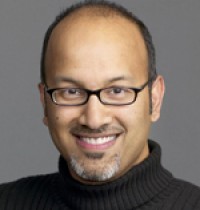Programs build support systems for local teens.
Programs build support systems for local teens
It was an ordinary afternoon at Palo Alto’s Gunn High School, when a cluster of freshmen gathered in the frosh quad for lunch. Then something remarkable happened.

Shashank Joshi
A wave of upperclassmen suddenly descended on the ninth-graders and proceeded to, well, be nice. They introduced themselves, asked the younger students how they were doing and generally took a sledgehammer to the rigid social codes that govern high school.
Call it step one.
“What they’re trying to do is redirect the very culture of high school,” said Paul Dunlap, an English teacher at Gunn and a peer support group faculty advisor. “Instead of thinking, ‘I’m only friends with these people, these are the people I care about,’ they’re working to break down cliques and make sure everyone on campus knows each other.”
The need for such a transformation is clear. Rocked by a spate of youth suicides in 2009 and 2010, and backed by mounting evidence of the significance of peer relations, both Gunn and Palo Alto High School have set out to make some fundamental improvements in their students’ mental health. They have launched two innovative programs to encourage kids to seek help, improve their understanding of mental illness and strengthen social bonds through peer networks.
Lucile Packard Children’s Hospital has taken an active role in these initiatives, providing funding for the clinical and research infrastructure to launch and evaluate them. The initiatives are part of a larger effort, known as Project Safety Net, supported in part by Packard Children’s.
“As a school district and a hospital, our missions are joined,” said Shashank Joshi, MD, director of the child and adolescent psychiatry residency program at Packard Children’s and a Project Safety Net executive committee member. “The collective job is to keep kids healthy enough to learn and to access the curriculum so they can be the best they can be academically, socially and as a citizen.”
At Palo Alto High School, the More Than Sad initiative is a 90-minute program that includes a video developed by experts in suicide prevention, which teaches teens how to identify and respond appropriately to depression. The program can be delivered in the classroom in one or two sessions and is portable, making it appealing to teachers.
Meanwhile, Gunn has instituted a wellness program called Sources of Strength, built around a student-led peer support group called ROCK (Reach Out. Care. Know.). Its central effort is to have peer leaders from disparate social groups deliver positive messages while empowering students to help friends who appear to be in distress.
“It’s about creating a climate change on the campus, so that it’s not only OK to get help for a friend in distress, but it’s cool to do so,” Joshi said. “What’s more, it’s easy because you have a group of trusted adults you can go to.”
The program seems to be making a difference, he added, with more students taking advantage of available services. Students also appear to observe warning signs among their peers, such as a friend talking about the train schedule or no longer returning text messages.
For the 80 or so students involved this year, Dunlap said it’s given them a way to focus on their emotional needs and invest in the emotional health of the entire school.
“I don’t know that you can totally erase the existence of cliques, for example, but I hear anecdotes of people going up to strangers and saying, ‘How’s it going? You look sad.’ Enough of those little things happen, and maybe that’s how a culture shifts,” Dunlap said.
Joshi said he believes the efforts under way represent an even broader shift across Palo Alto.
“The city, the schools, the organizations — everyone’s doing an excellent job of coming together,” he said. “They’re asking, ‘How do we get better at reaching the greatest number of kids?’ We believe we’re creating a model of how a community can collaborate on school mental health and truly have an impact on such an important issue.”
By Chris Colin
Chris Colin is a writer in the communications office at Lucile Packard Children’s Hospital.
###
* Stanford University Medical Center integrates research, medical education and patient care at its three institutions – Stanford University School of Medicine, Stanford Hospital & Clinics and Lucile Packard Children’s Hospital.
** The above story is adapted from materials provided by Stanford University School of Medicine
________________________________________________________________



















